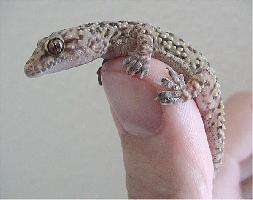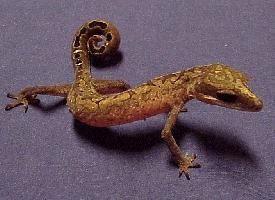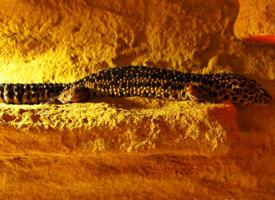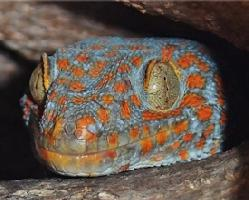
Poids et mesures
| Longueur | de 9 à 18 cm |
|---|
Données biologiques
| Durée de vie | de 10 à 20 ans |
|---|
Description de l'animal
The Mediterranean house gecko, scientifically known as Hemidactylus turcicus, is a small, nocturnal reptile belonging to the family Gekkonidae. This species is native to the Mediterranean region, but due to its adaptability and the pet trade, it has spread to many other parts of the world, including the southern United States, where it is often found living in close proximity to human habitations.An adult Mediterranean house gecko typically measures between 4 to 5 inches (10 to 12.7 cm) in length, including the tail, and has a somewhat flattened body which aids in its ability to squeeze into tight spaces and remain undetected. The coloration of this gecko is generally a mottled pattern of grays, browns, and whites, which serves as excellent camouflage against natural rock and bark surfaces, as well as the walls of buildings. Some individuals may exhibit a pink or purplish hue, and the color can change slightly in intensity depending on the temperature, light conditions, and the gecko's stress levels.
One of the most distinctive features of the Mediterranean house gecko is its large, lidless eyes with vertical pupils, an adaptation for its nocturnal lifestyle. These eyes are highly sensitive to light, allowing the gecko to see well in the dark as it hunts for insects and other small invertebrates.
The Mediterranean house gecko has specialized toe pads equipped with tiny hair-like structures called setae, which are capable of exploiting van der Waals forces to adhere to surfaces, including glass, walls, and ceilings. This incredible adaptation enables the gecko to climb and maneuver across various surfaces with ease, making it an agile and versatile predator.
In terms of behavior, Hemidactylus turcicus is a territorial and solitary creature, often heard before seen due to its distinctive chirping calls, especially during the mating season. These calls serve as communication between individuals, as well as to establish and defend territory.
The breeding season for Mediterranean house geckos typically occurs in the warmer months, when females lay clutches of one or two eggs in sheltered, warm locations. The eggs are somewhat soft-shelled and adhere to the substrate where they are laid. After an incubation period of several weeks to a few months, depending on environmental conditions, the eggs hatch, releasing tiny geckos that are independent from birth and receive no parental care.
As an introduced species, the Mediterranean house gecko has adapted well to urban environments and is often welcomed by homeowners due to its diet of insects, including pests such as cockroaches and moths. However, its presence can also lead to competition with native gecko species, potentially impacting local ecosystems.
In conclusion, the Mediterranean house gecko is a fascinating example of a highly adaptable reptile that has thrived both in its native range and as an introduced species in new environments. Its unique physical adaptations, such as the sticky toe pads and sensitive eyes, as well as its reproductive strategy and insectivorous diet, make it a successful generalist and an interesting subject of study for herpetologists and nature enthusiasts alike.
Animaux similaires
Nouvelles photos d'animaux
Top 10 des animaux
- Dolphin gull (Leucophaeus scoresbii)
- Diana monkey (Cercopithecus diana)
- Moustached guenon (Cercopithecus cephus)
- Galápagos tortoise (Geochelone nigra complex)
- Russian tortoise (Testudo horsfieldii)
- Japanese macaque (Macaca fuscata)
- Stone loach (Barbatula barbatula)
- Common flying dragon (Draco volans)
- Greek tortoise (Testudo graeca)
- Vendace (Coregonus albula)


